Ever since the appearance of Plato’s famous book The Republic, people have been trying to develop a utopia, like the imaginary island described in Sir Thomas More’s Utopia. Plato himself was perhaps skeptical and knew that his ideology did not lead to some pragmatic approach as he stated in The Republic. ‘The society we have described can never grow into a reality or see the light of day, and there will be no end to the troubles of states, or indeed, my dear Glaucon, of humanity itself till philosophers become rulers in this world or till those we now call kings and rulers really and truly become philosophers, and political power and philosophy thus come into the same hands.’ Communes usually shares things of common interest including, at times, even resources, income, property, and decision making. A commune can be as large as a city of two million inhabitants like Paris, while it may also be as small a unit as a hamlet of ten persons. A commune is typically distinguished from a town in that agricultural practices like farming and fishing are predominant in communes against the towns which are predominantly more industrialized.
1. Auroville
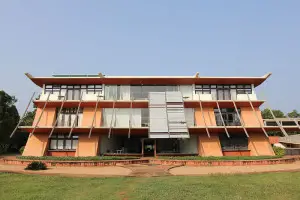
Also known as the City of Dawn is an experimental town. It was founded on February 28, 1968 by Mira Alfassa and designed by the architect Roger Anger. Its inauguration ceremony was attended by delegates from 124 countries. It is located in Viluppuram district in Tamil Nadu, State of India. In Alfassa’s own words, ‘Auroville is meant to be a universal town where men and women of all countries are able to live in peace and progressive harmony, above all creeds, all politics, and all nationalities. The purpose of Auroville is to realize human unity.’ The community was endorsed by the Indian government, and UNESCO endorsed it four times. The total population of the community is 2,200, and 836 of them are Indians. The community neighborhoods are named in English, Sanskrit, French, and Tamil as: Aspiration, Arati, Isaiamba, and Le Ferme. In 1971, the National Film Board of Canada released a documentary on Auroville as seen by a Concordia University professor who lived in it for a year. The BBC produced and aired a 10-minute documentary on Auroville in 2008.
2. Kibbutz
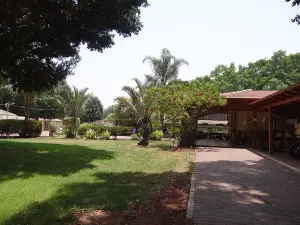
A kibbutz is a collective community in Israel which began as a farming utopian community which believed in both socialism and Zionism. Members of the kibbutz are called kibbutzniks. Kibbutzims were established in late 19th century and became popular in the early 20th century. They play a notable role in Israel’s economy as reflected in their statistical data. There were 270 kibbutzim in Israel in 2010. Their farms and factories constitute about 9 percent of Israel’s total industrial output and about 40 percent of its agricultural output which is worth $1.7 billion. Most kibbutzim comprise 200 members at an average, and by the year 1950, more than 60,000 Israelis lived in communes. The main philosophy of the commune revolves around equality and supremacy of the commune over individuals.
3. Oneida Colony Community
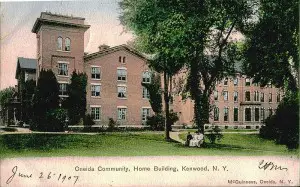
Located in New York, U.S. the Oneida Colony Community was established in 1848 by John Humphrey Noyes, who was an American Utopian Socialist. The community started with only 80 members, and by the year 1880 there were 360 members. The community owned a small mansion house where all the members lived and worked as a commune. The community believed that Christ had already arrived and that it was for them to make the world a paradise on Earth. The community did not believe in monogamy and everyone in community was effectively married to everyone in the community. Noyes implemented an unusual system of character refinement. Each member was brought before the communal committee and was informed of his/her weaknesses and was expected to rectify the shortcomings. Noyes was constrained to flee in 1879 to avoid law enforcement agencies in connection with the charges relating to the complex marriage system considered by law as rape.
4. Nimbin
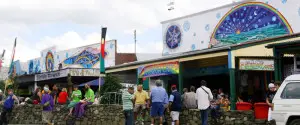
Nimbin is a small village in the Australian state of New South Wales about 30 km from Lismore. It is famous for its environmental sustainability, self-sufficiency, for its Aquarius Festival and is basically a gathering of hippies and for being a cannabis counterculture. A counterculture is a subculture that deviates from the generally accepted norms. If allowed to progress unchecked, it culminates in dramatic cultural changes like Romanticism, Bohemianism, and the Hippie Counterculture. Nimbin has been variously described as a social experiment, Australian drug center, and as a fantasy subculture.
5. The Harmony Society Communities
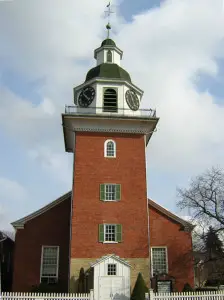
Johann Georg Rapp founded the Harmony Society in Pennsylvania when he led many immigrants to America. He established three independent communes, and the Harmony Settlement in Pennsylvania soon became a success gathering more than 800 members in a short period of time. The residents of Harmony sold their lands in order to settle in Indiana, but they returned to Pennsylvania and established the third commune. The community had a resident prophet named Rapp who predicted the imminent return of Jesus which did not prove true, and the society was ultimately dissolved in the year 1900.
6. Arcosanti
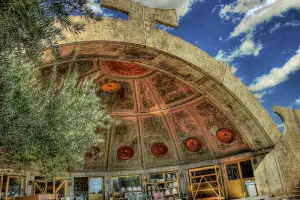
Arcosanti is an experimental town which aims at achieving the minimal destruction of Earth under a maximum density of human population. The architect of Arcosanti, Paolo Soleri, coined the term ‘archology’ by combining ‘architecture’ and ‘ecology.’ The project was started in 1970 at about 70 km from Phoenix in central Arizona. The structures would be including various residential, agricultural, and commercial facilities for sustainability and self-sufficiency. The Discovery Channel in its Extreme Engineering program featured the Shimizu Mega-City pyramid hyperstructure. There are 13 main structures on the site. The use of silt from suburban areas, the construction of a half dome, bronze casting, and ceramic structures, etc. are some of the unique features of the Arcosanti construction.
7. Dementiaville

Dementiaville is a unique village in the world which is dedicated exclusively to the living of people suffering from dementia. The project was highly criticized in the beginning, and the idea of the dementia patients living on their own without locks and with minimal medication was strictly disapproved. Yvonne van Amerongen, two of the six founders explained, ‘In life, we want to live with people like ourselves. We want to be surrounded by people we would choose to be friends with, those with similar values, similar jobs, and with similar interests. Living in isolation in conventional, old homes is more like dying rather than living.’
8. Fristaden Christiania

‘Fristaden’ stands for ‘free town,’ from ‘fri’ meaning ‘free’ and ‘staden’ meaning ‘town.’ It is a community comprising of 850 members and covering 84 acres in the Danish capital of Copenhagen. It is regarded as a commune and is regulated by a special law known as the Christiana Law of 1989. According to this law, the commune is partly supervised by the state and partly by the municipality of Copenhagen. The status of Christiana has been controversial since its conception in 1974 on account of its cannabis trade. Residents of Christiana closed it in 2011, but it was reopened later on.
9. Amana Society
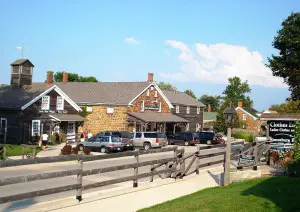
Also known as the Community of the True Light, the Amana Society was founded by the German emigrant, Christan Metz. The society originated in Germany and then transferred to Buffalo, New York and was relocated to Iowa in 1859. The society built seven villages covering 25,000 acres. The members regarded Metz as a prophet .They lived in separate homes but shared community dining halls and a community house for their social activities. The society was dissolved in 1930, and the villages were abandoned officially.
10. Brook Farm Commune
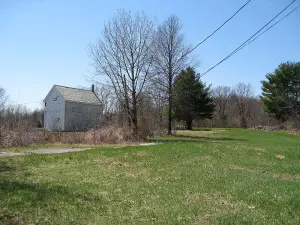
The Brook Farm Commune was founded by the famous writer George Ripley in Boston, Massachusetts in 1841. His mission was to ‘prepare a society of liberal, intelligent, and cultivated persons whose relations with each other would permit a more wholesome and simple life than can be led amidst the pressure of our competitive institutions.’ In 1844, Brook Farm adopted a constitution based on Charles Fourier’s socialist ideas, but the commune disintegrated as soon as it demanded sharing of income.
Conclusion:
When a group of individuals lives with like-minded individuals in a community for a prolonged time, it usually concludes that in spite of common interests, the group is comprised of individuals who are quite different from one another. Just as different individuals can live in a community in complete harmony, different communities, towns, provinces and all the different countries of the globe too can live in complete peace and harmony, but this, in reality, is more a sort of utopia rather than a pragmatic approach. UNO is perhaps the most famous experimental global community, but the experiment is still far from being a success and ‘needs to do more.’










Leave a Reply